Sedona, Arizona 作者: 来源: 发布时间:2021-07-19
I.Population and Area
₋Area
Land: 19.07 sq mi (49.40 km2)
₋Population
Total: 10,031
Density: 543.24/sq mi (209.74/km2)
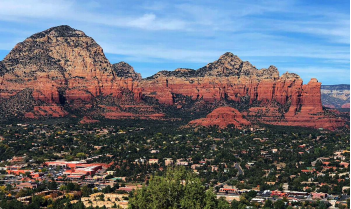
II.Natural Geography
₋Sedona /sɪˈdoʊnə/ is a city that straddles the county line between Coconino and Yavapai counties in the northern Verde Valley region of the U.S. state of Arizona. As of the 2010 census, its population was 10,031 Most of the city lies in Yavapai County, with a portion in the east located in Coconino County.
₋Sedona's main attraction is its array of red sandstone formations. The formations appear to glow in brilliant orange and red when illuminated by the rising or setting sun. The red rocks form a popular backdrop for many activities, ranging from spiritual pursuits to the hundreds of hiking and mountain biking trails.
₋Sedona was named after Sedona Arabella Miller Schnebly (1877–1950), the wife of Theodore Carlton Schnebly, the city's first postmaster, who was celebrate d for her hospitality and industriousness. Her mother, Amanda Miller, claimed to have made the name up because "it sounded pretty".
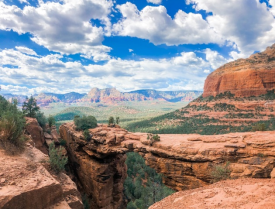
III.GDP
₋The average salary in Sedona, AZ is $15.36. Trends in wages decreased by -100.0 percent in Q1 2020. The cost of living in Sedona, AZ is 29 percent higher than the national average. The most popular occupations in Sedona, AZ are Certified Nurse Assistant (CNA), Administrative Assistant, and Retail Store Manager which pay between $10.87 and $30.62 per year. The most popular employers in Sedona, AZ are Bashas' Inc., Hilton Worldwide, and Mastercorp Inc..
₋Website: https://www.payscale.com/research/US/Location=Sedona-AZ/Salary
IV.Industrial Characteristics
₋The economy of Sedona, AZ employs 4.52k people. The largest industries in Sedona, AZ are Accommodation & Food Services (650 people), Health Care & Social Assistance (586 people), and Administrative & Support & Waste Management Services (483 people), and the highest paying industries are Agriculture, Forestry, Fishing & Hunting, & Mining ($104,141), Information ($78,906), and Manufacturing ($72,938).
₋Website: https://datausa.io/profile/geo/sedona-az
V.Attractions
1.Chapel of the Holy Cross
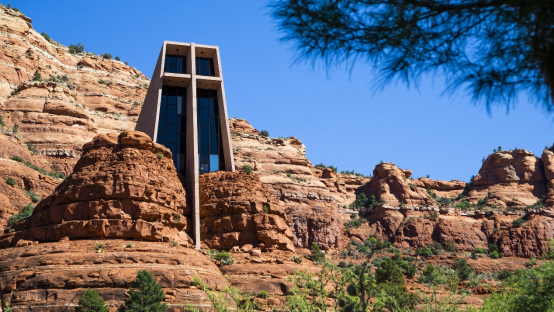
₋The Chapel of the Holy Cross is a Roman Catholic chapel built into the buttes of Sedona, Arizona. The chapel is under the episcopal see of the Roman Catholic Diocese of Phoenix and its ministry is conducted by St. John Vianney Parish, Sedona.
₋The chapel was inspired and commissioned by local rancher and sculptor Marguerite Brunswig Staude, who had been inspired in 1932 by the newly constructed Empire State Building to build such a church. After an attempt to do so in Budapest, Hungary (with the help of Lloyd Wright, son of architect Frank Lloyd Wright) was abandoned due to the outbreak of World War II, she decided to build the church in her native region.
₋Richard Hein was chosen as project architect, and the design is by architect August K. Strotz, both from the firm of Anshen & Allen. The chapel is built on Coconino National Forest land; the late Senator Barry Goldwater assisted Staude in obtaining a special-use permit. The construction supervisor was Fred Courkos, who built the chapel in 18 months at a cost of US$300,000. The chapel was completed in 1956.
₋The American Institute of Architects gave the Chapel its Award of Honor in 1957. In the sculptor's words, "Though Catholic in faith, as a work of art the Chapel has a universal appeal. Its doors will ever be open to one and all, regardless of creed, that God may come to life in the souls of all men and be a living reality."
₋In 2007, Arizonans voted the Chapel to be one of the Seven Man-Made Wonders of Arizona.
₋Address: 780 Chapel Rd, Sedona, AZ 86336, United States
₋Opened: 1956
₋Phone: +1 928-282-4069
₋Website: https://chapeloftheholycross.com/
2.Sedona Heritage Museum
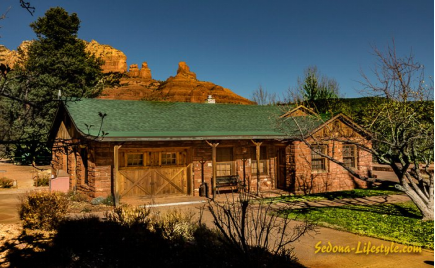
₋"They Made History" is on display through March 2020. This traveling exhibit provided by the Arizona Questers gives background on the suffrage movement – the why, the what, the challenges, and the figures in Arizona responsible for this state being the 8th in the U.S. to grant women the right to vote. “Influential Sedona Women of the Past” will be on display through November 2020. This display profiles women who contributed to Sedona’s development and character over the past 150 years or so. Photos and artifacts will help tell the stories of the first Anglo woman to give birth in Oak Creek Canyon and her treacherous journey across country; the gumption of the woman who wouldn’t take ‘no’ for an answer from geologists and drilled the first successful water well in West Sedona; and the mother who started the first school to insure an education for her children. Included in the exhibit are entertaining stories of local mid-wives, artists, and homesteading women. These women are rarely mentioned in the history books, but were resilient and had to be hardy to brave living in such a remote place.
₋Address: 735 Jordan Rd, Sedona, AZ 86336, United States
₋Phone: +1 928-282-7038
₋Website: https://sedonamuseum.org/exhibits/
3.Tlaquepaque Arts & Shopping Village
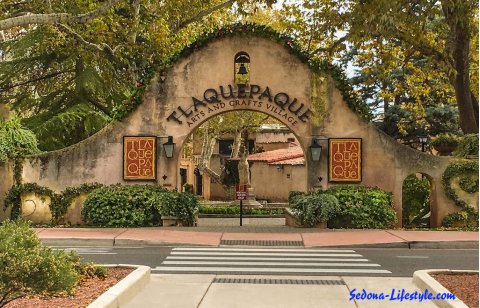
₋Your unforgettable Sedona experience must include spending time at internationally renowned Tlaquepaque (pronounced T-la-keh-pah-keh), Sedona Arizona's Arts & Crafts Village, on of the best things to do in Sedona. Nestled beneath the shade of the sycamores on the banks of beautiful Oak Creek in Sedona, Tlaquepaque is the most distinctive Sedona shopping experience to be found in the Southwest. Authentically fashioned after a traditional Mexican village, Tlaquepaque, meaning the "best of everything," has been a Sedona landmark since the 1970's. Its vine covered stucco walls, cobble-stoned walkways and magnificent arched entryways give you the feeling that Tlaquepaque has been here for centuries. Tasteful galleries and unique shops live in harmony with its lush natural environment where giant sycamore trees stand in testimony to the care taken in preserving the timeless beauty of the Tlaquepaque grounds. It would be hard to find more beautiful surroundings anywhere to create a shopping experience like no other.
₋Originally conceived as an artist community, Tlaquepaque is a perfect setting to witness gifted Sedona artisans absorbed in their work. It's not uncommon to venture upon a well-known sculptor working on his or her latest piece right in one of the Tlaquepaque galleries. With over 50 specialty shops and exclusive art galleries, shopping becomes a joyful revelation of fabulous art treasures and distinctive gifts around every corner. Tlaquepaque is filled with spectacular one-of-a kind art expressions in every medium from Western and eclectic bronze sculpture, functional and traditional ceramics, breathtaking blown glass creations, contemporary and Southwestern fine art paintings, weavings, decorative arts, architectural décor pieces and stunning large format photography. Fine contemporary jewelry, designer casual wear in silks, and leathers and unusual gift items all await the Tlaquepaque visitor.
₋Address: 336 AZ-179, Sedona, AZ 86336, United States
₋Phone: +1 928-282-4838
₋Website: https://www.tlaq.com/
VI.History
₋Native American history
₋The first documented human presence in the Sedona area dates to between 11,500 and 9000 B.C. It was not until 1995 that a Clovis projectile point discovered in Honanki revealed the presence of the Paleo-Indians, who were big game hunters. Around 9000 B.C., the pre-historic Archaic people appeared in the Verde Valley. These were hunter-gatherers and their presence in the area was longer than in other areas of the Southwest, most likely because of the ecological diversity and large amount of resources. They left by 300 A.D. There is an assortment of rock art left by the Archaic people in places near Sedona such as Palatki and Honanki.
₋Around 650 A.D., the Sinagua people entered the Verde Valley. Their culture is known for its art such as pottery, basketry and their masonry. They left rock art, pueblos, and cliff dwellings such as Montezuma Castle, Honanki, Palatki and Tuzigoot, especially in the later period of their presence. The Sinagua abandoned the Verde Valley about 1400 A.D. Researchers believe the Sinagua and other clans moved to the Hopi mesas in Arizona and the Zuni and other pueblos in New Mexico.
₋The Yavapai came from the west when the Sinagua were still there in the Verde Valley around 1300 A.D. They were nomadic hunter-gatherers. Some archaeologists place the Apache arrival in the Verde Valley around 1450 A.D. Many Apache groups were nomadic or seminomadic and traveled over large areas.
₋The Yavapai and Apache tribes were forcibly removed from the Verde Valley in 1876, to the San Carlos Indian Reservation, 180 miles (290 km) southeast. In the middle of winter, almost 1,500 people were marched to San Carlos. Several hundred lost their lives. The survivors were interned for 25 years. About 200 Yavapai and Apache people returned to the Verde Valley in 1900 and have since intermingled as a single political entity although culturally distinct residing in the Yavapai-Apache Nation.
₋Anglo-American settlement
₋The first Anglo settler, John J. Thompson, moved to Oak Creek Canyon in 1876, an area well known for its peach and apple orchards. The early settlers were farmers and ranchers. In 1902, when the Sedona post office was established, there were 55 residents. In the mid-1950s, the first telephone directory listed 155 names. Some parts of the Sedona area were not electrified until the 1960s.
₋Sedona began to develop as a tourist destination, vacation-home and retirement center in the 1950s. Most of the development seen today was constructed in the 1980s and 1990s. As of 2007, there are no large tracts of undeveloped land remaining
₋Important early settlers included the Steele family, originally of Scotland.
₋Chapel of the Holy Cross
₋In 1956, construction of the Chapel of the Holy Cross was completed. The chapel rises 70 feet (21 m) out of a 1,000-foot (300 m) redrock cliff. The most prominent feature of the chapel is the cross. Later a chapel was added. Inside the chapel there is a window and a cross with benches and pews.
₋Cinematic legacy
₋Sedona played host to more than sixty Hollywood productions from the first years of movies into the 1970s. Stretching as far back as 1923, Sedona's red rocks were a fixture in major Hollywood productions—including films such as Angel and the Badman, Desert Fury, Blood on the Moon, Johnny Guitar, The Last Wagon, and 3:10 to Yuma. However, the surroundings typically were identified to audiences as the terrain of Texas, California, Nevada, and even Canada–US border territory.
₋The town even lent its name to the 2011 film Sedona.
₋Brins Fire
₋On June 18, 2006, a wildfire, reportedly started by campers, began about one mile (1.61 km) north of Sedona. The Brins Fire covered 4,317 acres (17 km2) on Brins Mesa, Wilson Mountain and in Oak Creek Canyon before the USDA Forest Service declared it 100 percent contained on June 28. Containment cost was estimated at $6.4 million.
₋Slide Fire
₋On May 20, 2014, a wildfire started from an unknown cause began north of Sedona at Slide Rock State Park. The Slide Firespread across 21,227 acres in Oak Creek Canyon over nine days and prompted evacuations. State Route 89A opened to Flagstaff in June, but all parking and canyon access was closed to the public until Oct. 1, 2014.
VII.Other Information
₋Government
₋Politically, Uptown Sedona, the Gallery District and the Chapel area (all in Coconino County) and West Sedona (in Yavapai County) form the City of Sedona. Founded in 1902, it was incorporated as a city in 1988. The unincorporated Village of Oak Creek, 7 miles (11 km) to the south and well outside the Sedona city limits, is a significant part of the Sedona community.
₋Sedona became one of the Arizona municipalities to approve of civil unions for same-sex partners.
₋Culture
₋The Sedona area hosts numerous events annually, including:
St. Patrick's Parade, Celebration of Spring, Sedona Food Truck Festival, Red Dirt Concerts, Pumpkin Splash, and WagFest and Fair are just a few of the community events offered by the local Parks and Recreation Department.
Sedona Marathon
The Sedona Miracle Annual Charity Fundraiser
Sedona Bluegrass Festival (2007–2014)
Sedona Hummingbird Festival (2012–present);
The Sedona Solstice Festivals (Summer and Winter) at Unity of Sedona (2012–present)
Sedona hosts several notable arts organizations in Northern Arizona:
Chamber Music Sedona sponsors a chamber-music program annually from October to May. The 2012–2013 season marked the 30th anniversary for the organization.
The Sedona Arts Center, founded in 1958, is the oldest arts center in northern Arizona.
Sedona International Film Festival & Workshop was established in 1995. The week-long annual festival takes place in late February and early March at Harkins Theatres, while supplemental events take place at area resorts and restaurants. The festival also hosts monthly events, and they sponsor the MET: Live in HD opera broadcasts in Sedona.
NORAZ Poets, extant from 2003 to 2007, was a nonprofit poetry network based in Sedona.
Greg Lawson Galleries, a popular local art gallery in Sedona.
A specialized New Age tourist industry operates in Sedona, where José Arguelles organized the "Harmonic Convergence" in 1987. Some New Age proponents purport that "spiritual vortices" are concentrated in the Sedona area at Bell Rock, Airport Mesa, Cathedral Rock, and Boynton Canyon.
₋Education
₋Sedona is served by the Sedona-Oak Creek Unified School District.
₋West Sedona School, serving grades K–6, is located at 570 Posse Ground Road.
₋Red Rock Early Learning Center is a year-round Preschool program designed for children aged 3–5 years old. Their normal school year runs from August to May each year, with a summer session offered during June and July. It is licensed by the ADHS, and located in West Sedona Elementary School building 300.
₋Verde Valley School, a boarding International Baccalaureate high school with many international students, is located between the Village of Oak Creek and Red Rock Crossing. It hosts numerous 'traditions' and performances open to the community. Their mascot is the coyote. Total attendance measures about 120 students per year, grades 9–12. Oscar winner composer James Horner studied there (Titanic, Braveheart, Avatar, Legends of The Fall).
₋Sedona Red Rock High School (SRRHS), built in 1994, is located on the western edge of town in West Sedona. The school's mascot is the Scorpion. The high school's new campus, a series of single story buildings, is located opposite the Sedona campus of Yavapai College. As of 2016, Sedona Red Rock High School holds grades 7–8 in the Junior High portion of campus.
₋Sedona Charter School (SCS) is located behind the Sedona Public Library, serving as a Montessori-based school for grades K–8.
₋Yavapai College's Sedona Center for Arts & Technology includes the Sedona Film School, which offers certificates in independent filmmaking, the Business Partnership Program, the Osher Lifelong Learning Institute, and the University of Arizona Mini Med School.
₋The University of Sedona is an unaccredited institution providing ministerial training and education in metaphysics.
VIII.Contact Information
₋Government
Type: Council–Manager
Mayor: Sandy Moriarty
₋City Hall
Contact Directly Website: https://www.sedonaaz.gov/your-government/departments/staff-directorya
